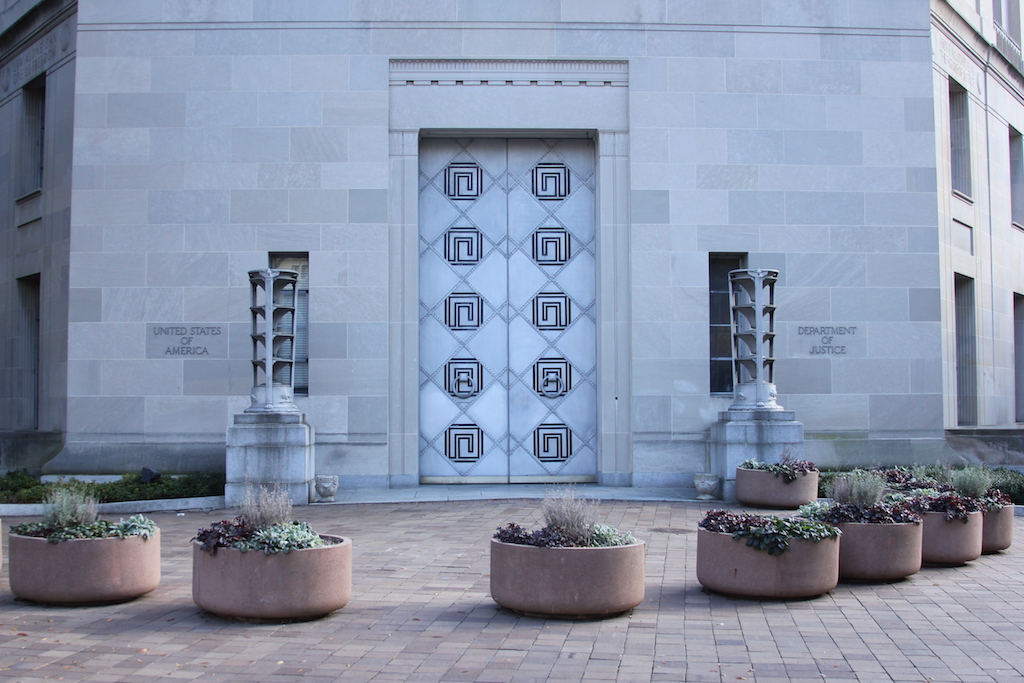Another Cryptocurrency Target for U.S. Regulators: Tether
Bitcoin and its ilk have gotten a lot of attention recently as the speculation bubble bursts. The negative attributes and uses of cryptocurrency are substantial: Bitcoin is known to facilitate money laundering, drug sales and extortion—illegal activity for which transactions are banned by centralized authorities that control all other electronic payment channels.

Published by The Lawfare Institute
in Cooperation With

Bitcoin and its ilk have gotten a lot of attention recently as the speculation bubble bursts. The negative attributes and uses of cryptocurrency are substantial: Bitcoin is known to facilitate money laundering, drug sales and extortion—illegal activity for which transactions are banned by centralized authorities that control all other electronic payment channels. Other cryptocurrencies are engaged for such transactions and have been used for unlicensed securities or “smart” contracts (which appear to be useful for Ponzi schemes or as code for thieves to exploit), or providing better anonymity guarantees.
Because of their use in criminal activity, most cryptocurrency exchanges are cut off from the conventional banking system. Those that have access are required to generate IRS reports on transactions of a certain size and report suspicious activities. But substantially more could be done to disrupt unregulated exchanges —and the token Tether should be the government’s next target.
In particular, U.S. regulators should investigate those behind Tether for possible violations of Patriot Act provisions on money laundering and other financial fraud laws. Prosecution is likely to inhibit criminal scheming and to substantially disrupt the exchanges that rely on Tether to function.
To be usable for payments, a cryptocurrency requires a stable store of value; this can be created by an entity that accepts U.S. dollars and issues “cryptodollars” and, critically, also accepts cryptodollars and would exchange them for the underlying dollars. The cryptocurrency environment has elements of the “Free Banking” era in the 1800s, when state banks would accept gold and silver coins and issue their own banknotes. Digital tokens that are backed by an entity and traditional form of currency don’t need to be converted to and from dollars by holders seeking to avoid wild swings in value.
Tether is a cryptographic token built on top of Bitcoin that self-describes as such a digital banknote. Tether is operated by the same group in charge of the Bitfinex Bitcoin Exchange, which was cut off from global banking operations in April 2017. The exchange takes U.S. dollars and says that it keeps them in reserve while issuing Tethers. It also says it will redeem Tethers for U.S. dollars on demand. The volume of Tethers has rocketed from $300 million in September to about $2.2 billion as of Feb. 1. The growth was created almost entirely in increments of $100 million, which were transferred to the Bitfinex exchange to purchase other cryptocurrencies. While the conversion of dollars to Bitcoin is particularly expensive and Bitcoin’s volatility is notoriously high, Tether, even after the rapid growth in volume, has remained stable in value at effectively one Tether to one U.S. dollar. A centrally issued and supposedly convertible cryptocurrency, even one created by an entity under scrutiny for Bitcoin’s valuation issues, is still more useful than un-backed alternatives.
Accordingly, Tether has become the reserve currency of sorts for unbanked exchanges. Numerous cryptocurrency exchanges hold Tethers since they can’t access other banking resources. Without Tether, huge swaths of the speculative environment would be undermined: Speculators would be unable to move from unstable assets to stable, valued ones. If forced to shift only between different unstable assets, some exchanges might cease to exist. These exchanges don’t generally follow regulations on money laundering and other financial laws—if they did, they could access legitimate banking resources. They are also the primary vehicle for hiding money flows by allowing customers to switch between different cryptocurrencies. In short, they represent a significant problem.
Enter the government.
Tether appears likely to be a scheme that facilitates money laundering or to be a “wildcat bank,” one that prints banknotes that aren’t actually backed. In both cases the U.S. government can, and should, intervene.
The first instance bears resemblance to activity facilitated by Liberty Reserve, a Costa Rica-based digital currency system that for about six years transferred funds between users in different countries. Liberty Reserve would exchange U.S. dollars for Liberty Reserve Dollars and vice-versa and tracked users’ holdings. The system was designed to enable money laundering and, after suspicious activity raised questions, was the subject of investigations in nearly 20 countries. The Justice Department shut down Liberty Reserve in 2013 and charged (and later prosecuted) several organizers under the Patriot Act’s money-laundering statutes.
While Liberty Reserve used a private ledger to track balances, Tether uses a public pseudonymous ledger. This sort of ledger means that intermediary holders are not known to Tether, only to those who redeem Tethers. If anything, such willful ignorance suggests more, not less, criminal culpability.
Tether isn’t just theoretically useful for money laundering; its use as a reserve currency for unbanked exchanges shows its value for laundering funds. Tether is used to conduct electronic financial transactions that bypass the oversight inherent in the banking system. Consider also that only one cryptocurrency exchange with banking, Kraken, accepts Tether for trading at all and that the only thing Tethers can be sold for on that exchange is U.S. dollars. On Kraken, one can’t use Tethers to directly buy different cryptocurrencies.
Another possibility is that Tether is what’s known as a wildcat bank, or an entity printing banknotes that are not backed by reserves, despite its claims. The behavior of both Tether and Bitcoin since September lends credence to this notion. Since September, Tether has issued $1.9 billion in new Tethers, mostly $100 million at a time, and transferred them to its associated BitFinex exchange. These new Tethers then entered more general circulation.
This influx in new “money” almost certainly figured in the massive increase in Bitcoin’s price between September and December, much as a previous Bitcoin bubble was fueled by a scheme in which the MtGox Bitcoin exchange bought Bitcoins with nonexistent U.S. dollars. The difference here is that Bitfinex/Tether created their money in public view.
To believe these were legitimately issued and properly backed Tethers, one would also have to believe there was significant activity by large (presumably institutional) investors who wished to speculate in the cryptocurrency space and chose not to go with Coinbase, a U.S.-regulated cryptocurrency exchange based in San Francisco. Instead, these hypothetical investors willingly took on the risk of purchasing cryptocurrencies on unregulated exchanges, in addition to the inherent counterparty risk in Tether. And one has to believe that they did this even though these unregulated exchanges have a history of getting hacked, with customers losing their investments, and are known to facilitate various forms of fraud, including spoofing and wash trading.
The Commodity Futures Trading Commission reportedly sent a subpoena to Tether and Bitfinex in December, seeking information. Even after that, $1 billion in new Tethers was issued. There is reason for U.S. regulators to be interested: Many Americans participate on the Tether-only Bitcoin exchanges. After it lost banking access last April, Bitfinex effectively converted every user’s assets to Tethers. This conversion affected the U.S. customers who were officially supported at that time.
If a criminal investigation isn’t underway, one should be opened—with a public notice to warn those who are unaware of the risks of engaging in cryptocurrencies. The arrest of participants in the Liberty Reserve scheme effectively wiped out the value of Liberty Reserve Dollars, affecting both criminals and legitimate customers. Simply announcing an investigation may be sufficient to disrupt the Tether ecology. Prosecutions certainly would.
Striking at criminality around Tether is likely to cause follow-on disruptions that would disrupt the unregulated cryptocurrency ecology. This could eliminate a probably fraudulent source that inflated the most recent bubble and stands to cripple other exchanges that don’t follow banking laws and regulations. The results stand to reduce options for criminal transactions and minimize cryptocurrency bubbles—in other words, society would benefit all around.



